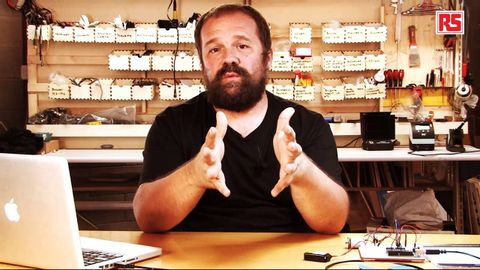
Subtitles & vocabulary
Arduino Video Tutorial 06: Motorized Pinwheel
00
Chuan Zhe Lin posted on 2013/05/20Save
Video vocabulary
colour
US /ˈkʌlɚ/
・
UK /ˈkʌlə(r)/
- Transitive Verb
- To change or affect someone's opinion
- To make something colorful using colored pencils
- Noun (Countable/Uncountable)
- Quality of things you can see, e.g. red, blue
- Pink or red in your face, e.g. after being ill
A1
More find
US /faɪnd/
・
UK /faɪnd/
- Transitive Verb
- To become aware of something that is happening
- To discover or meet by chance
- Noun (Countable/Uncountable)
- Object discovered by chance
- Things that have been discovered from searching
A1
More learn
US /lɚn/
・
UK /lɜ:n/
- Verb (Transitive/Intransitive)
- To get knowledge or skills by study or experience
- To find out something.
A1
More number
US /ˈnʌmbɚ/
・
UK /ˈnʌmbə(r)/
- Noun (Countable/Uncountable)
- Symbols such as 1, 2, 56, 793
- Particular song or dance performed during a show
- Transitive Verb
- To put numbers on things
- To assign a sequence within a group, series, set
A1TOEIC
More Use Energy
Unlock All Vocabulary
Unlock pronunciation, explanations, and filters
